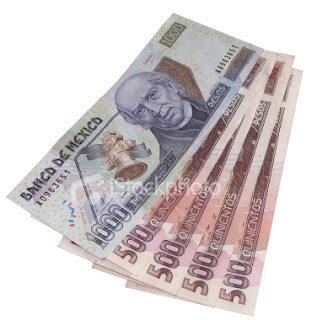
June 1 (Bloomberg) -- The dollar fell to an eight-month low versus the Australian currency and dropped against the Norwegian krone after reports in the U.S. and China showed global growth may be recovering, sparking demand for higher-yielding assets.
The Japanese yen weakened against all of the 16 most actively traded currencies, as a report showing manufacturing in China expanded for a third month encouraged Japanese investors to buy higher-yielding assets overseas. The dollar fell to the weakest level since October against the pound and the Canadian currency as stocks and commodities advanced after the U.S. manufacturing sector shrank at the slowest pace in eight months.
“This is part of the risk-appetite-recovery story,” said Jim McCormick, London-based global head of foreign exchange and local-markets strategy at Citigroup Inc., in an interview on Bloomberg Radio. “The market started to get concerned about the implications of the fiscal and monetary policies in the U.S.”
The greenback slid 1.5 percent to $1.6440 per pound at 3:30 p.m. in New York, after earlier breaching $1.64 for the first time since Oct. 31. The dollar traded at $1.4167 per euro, from $1.4158 on May 29. It touched $1.4246, the weakest level since Dec. 29.
The dollar’s decline versus the euro was capped at $1.4250, a 50 percent retracement of the drop from the record low of $1.6038 on July 15, to about $1.25 in March, according to Brian Dolan, chief currency strategist at FOREX.com, a unit of online currency trading firm Gain Capital in Bedminster, New Jersey.
“The euro-dollar is in consolidation,” said Dolan. “People will continue to buy the euro on dips.”
Commodity Currencies
The Japanese yen touched 78.33 versus the Australian dollar and 63.02 against the New Zealand dollar, the lowest levels since October, as investors resumed carry trades, in which they buy higher-yielding assets with funds borrowed in low-interest- rate countries. The Standard & Poor’s 500 Index rose 2.6 percent.
Against the dollar, the yen declined 1.4 percent to 96.72, from 95.34 at the end of last week. The Japanese currency reached 137.24 per euro, the lowest since April 6.
The Japanese currency declined against 15 of the 16 most actively traded currencies in the past three months, losing at least 20 percent versus the Brazilian real, the Australian and New Zealand’s dollars, South African rand and the Korean won. Only the dollar did worse.
Currencies of commodity producers led the rally against the dollar today after crude oil advanced as much as 3 percent to $68.29 a barrel.
Norway’s krone appreciated 1.4 percent versus the dollar to 6.2 krone, and touched 6.17, the strongest level since Oct. 14. The Australian dollar reached 81.38 U.S. cents, the strongest since September, while the Canadian dollar reached an eight- month high of C$1.0785. Crude oil is the largest export in Norway. Raw materials account for more than half of exports in Australia and Canada.
Dollar Index
“Commodity currencies are the best place to be, given the signs of the global economic recovery,” said Samarjit Shankar, director of global strategy for the Global Markets group in Boston at Bank of New York Mellon Corp.
The Dollar Index declined to the lowest level this year as the U.S. government said it will own a majority of General Motors Corp. after the carmaker filed for bankruptcy, heightening concern about record debt sales to fund bailout packages and economic stimulus programs. The index, used by the ICE to track the greenback against the euro, yen, pound, Swiss franc, Canadian dollar and Swedish krona, fell as much as 1 percent to 78.59, the lowest since Dec. 18.
Read entire article :



